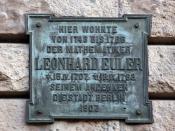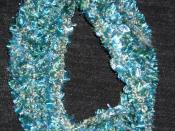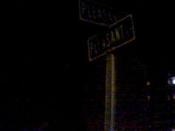According to Webster's, topology is defined as the study of those properties of geometric figures that remain unchanged even when under distortion, so long as no surfaces are torn. The word topology was coined in 1930 by the mathematician Solomon Lefschetz; who was a pioneer in the developing of the algebraic techniques of the topic.
Usually classified under geometry, topology has is often referred to as rubber band, rubber-sheet, or rubber-space geometry, due to the properties of a topological figure. Others call it the study of continuity, being that all topological figures have but one surface that has no end.
Topology may be roughly divided into three branches: point-set topology, combinatorial topology, and algebraic topology. Point-set topology (which is often referred to as simply general topology) considers figures as sets of points having such properties as being open or closed, compact, connected, and so forth. Combinatorial topology, in contrast to point-set topology, considers figures as combinations (complexes) of simple figures (simplexes) joined together in a regular manner.
Algebraic topology makes extensive use of algebraic methods, particularly those of group theory. There are also sections of topology that are in the overlap of these branches.
Topology is concerned with the properties of geometric figures that are unchanging under continuous transformations. A continuous transformation, also called a topological transformation or homeomorphism, is a one- to-one correspondence between the points of one figure and the points of another figure such that points that are randomly close on one figure are transformed into points that are also randomly close on the other figure. Figures that are related in this way are said to be topologically equivalent. These figure must remain unaltered when the space is bent, twisted, stretched, or deformed in any way; the only exceptions are that tearing the space is not allowed,


